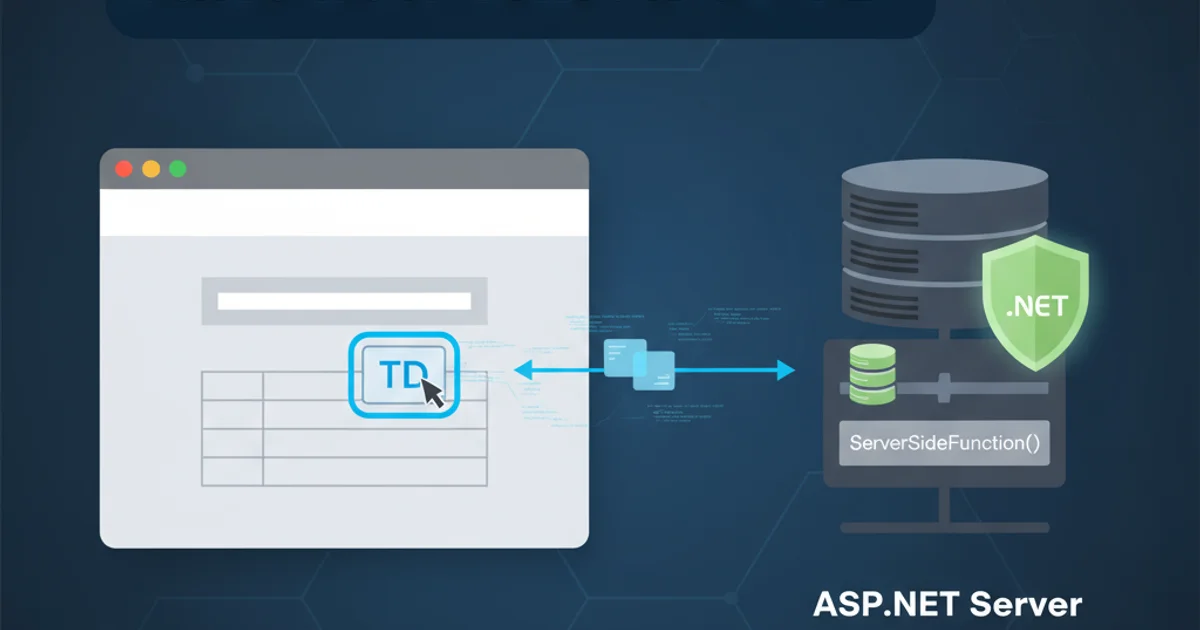When to use "window.onload"?
Categories:
Understanding window.onload: When and How to Use It Effectively

Explore the window.onload event, its purpose, and best practices for managing script execution after a web page fully loads, including alternatives for modern development.
The window.onload event is a fundamental part of web development, signaling that a web page, including all its resources like images, scripts, and stylesheets, has completely loaded. Understanding when and how to use it is crucial for ensuring your JavaScript executes at the correct time, preventing errors, and optimizing user experience. This article will delve into the specifics of window.onload, its implications, and modern alternatives.
What is window.onload?
The window.onload event fires when the entire page has loaded, including all dependent resources such as images, scripts, CSS files, and iframes. This means that by the time window.onload executes, the Document Object Model (DOM) is fully constructed, and all visual elements are ready for manipulation or interaction. It's often used to execute JavaScript code that depends on the full availability of the page's content.
flowchart TD
A[Browser Request Page] --> B[HTML Parsing & DOM Construction]
B --> C[Fetch CSS, JS, Images, etc.]
C --> D{All Resources Loaded?}
D -- No --> C
D -- Yes --> E["window.onload event fires"]
E --> F[Execute Dependent JavaScript]Lifecycle of a web page load and the window.onload event
window.onload = function() {
console.log('The entire page has loaded, including all resources!');
// Your code that needs all resources to be ready
const myImage = document.getElementById('my-image');
if (myImage) {
console.log('Image dimensions:', myImage.width, myImage.height);
}
};
// Or using addEventListener (preferred for multiple handlers)
window.addEventListener('load', function() {
console.log('Another script also ran after full page load.');
});
Basic usage of window.onload and window.addEventListener('load', ...)
window.onload multiple times, only the last assignment will be executed. Use window.addEventListener('load', ...) to attach multiple functions to the load event without overwriting previous ones.When to Use window.onload
While modern web development often favors earlier execution of JavaScript, there are specific scenarios where window.onload remains the appropriate choice:
- Image-dependent operations: If your JavaScript needs to know the dimensions of images or other media elements that are loaded asynchronously,
window.onloadensures these resources are fully available. - Third-party scripts: Some third-party widgets or analytics scripts might require the entire page to be rendered before they can initialize correctly.
- Complex layout calculations: If your script performs complex layout adjustments that depend on the final rendered state of all elements, including those affected by external stylesheets,
window.onloadprovides the most reliable timing. - Accessibility features: Scripts that manipulate the DOM for accessibility purposes, such as focus management or ARIA attribute adjustments, might benefit from waiting until the page is fully stable.
Alternatives to window.onload: DOMContentLoaded
For most JavaScript tasks, especially those involving DOM manipulation, DOMContentLoaded is a more efficient and commonly preferred alternative to window.onload. The DOMContentLoaded event fires when the initial HTML document has been completely loaded and parsed, without waiting for stylesheets, images, and subframes to finish loading. This means your JavaScript can start working with the DOM much sooner, leading to a more responsive user experience.
sequenceDiagram
participant B as Browser
participant D as DOM
participant R as Resources
B->>D: Parse HTML
D->>B: DOM Ready
B->>B: "DOMContentLoaded" event fires
B->>R: Load Images, CSS, etc.
R-->>B: All Resources Loaded
B->>B: "load" event firesComparison of DOMContentLoaded vs. Load event timing
document.addEventListener('DOMContentLoaded', function() {
console.log('DOM is ready! Images and other resources might still be loading.');
// Your code that only needs the DOM to be ready
const myDiv = document.getElementById('my-div');
if (myDiv) {
myDiv.textContent = 'Content added after DOM is ready!';
}
});
Using DOMContentLoaded for earlier script execution
DOMContentLoaded is generally preferred for most DOM manipulation tasks. Only use window.onload when your script explicitly depends on all external resources (like images) being fully loaded.